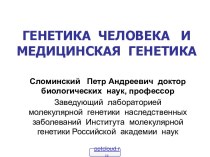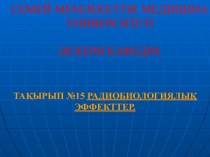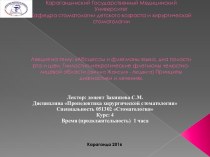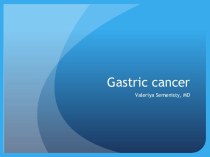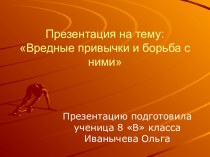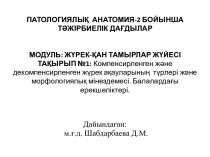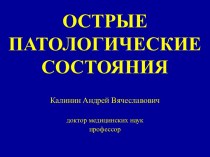- Главная
- Разное
- Бизнес и предпринимательство
- Образование
- Развлечения
- Государство
- Спорт
- Графика
- Культурология
- Еда и кулинария
- Лингвистика
- Религиоведение
- Черчение
- Физкультура
- ИЗО
- Психология
- Социология
- Английский язык
- Астрономия
- Алгебра
- Биология
- География
- Геометрия
- Детские презентации
- Информатика
- История
- Литература
- Маркетинг
- Математика
- Медицина
- Менеджмент
- Музыка
- МХК
- Немецкий язык
- ОБЖ
- Обществознание
- Окружающий мир
- Педагогика
- Русский язык
- Технология
- Физика
- Философия
- Химия
- Шаблоны, картинки для презентаций
- Экология
- Экономика
- Юриспруденция
Что такое findslide.org?
FindSlide.org - это сайт презентаций, докладов, шаблонов в формате PowerPoint.
Обратная связь
Email: Нажмите что бы посмотреть
Презентация на тему Efferent peripheral NS: the autonomic votor divisions
Содержание
- 2. Autonomic nervous system: A part of the
- 3. Review (again)
- 4. Autonomic Nervous System Responsible for control of
- 6. Overview: The Parts of a Reflex
- 7. Autonomic TargetsSmooth MuscleCardiac MuscleExocrine GlandsSome Endocrine glandsLymphoid TissueAdipose
- 8. Divisions of ANSSympathetic ParasympatheticMetasympathetic
- 9. Sympathetic and parasympathetic divisions typically function in
- 10. ANS2 divisions:Sympathetic “Fight or flight”“E” divisionExercise, excitement,
- 11. 1. The autonomic nervous system (ANS) is
- 12. Autonomic pathway: Two Efferent Neurons in SeriesPreganglionic
- 14. 3. Although “involuntary”, the autonomic nervous system
- 15. 4. The autonomic nervous system consists of
- 16. Sympathetic “Fight or flight” “E” division Exercise, excitement, emergency, and embarrassment
- 17. = Thoracolumbar division (T1 to L2)
- 18. Sympathetic (preganglionic ):1. The cell bodies giving
- 19. Sympathetic (postganglionic ):1. The cell bodies giving
- 20. Sympathetic ganglia Sympathetic chain ganglia (paravertebral ganglia)
- 21. Sympathetic Trunk GangliaLocated on both sides of
- 22. Prevertebral GangliaUnpaired, not segmentally arrangedOccur only in
- 23. The Organization of the Sympathetic Division of the ANS
- 24. CopyrightSympathetic Pathways to PeripheryFigure 15.9
- 25. Rejoin spinal nerves and reach their destination
- 26. CopyrightSympathetic Pathways to Thoracic Organs
- 27. Sympathetic innervation via preganglionic fibers that synapse
- 28. Celiac ganglionInnervates stomach, liver, gall bladder, pancreas,
- 29. CopyrightSympathetic Pathways to the Abdominal Organs
- 30. CopyrightSympathetic Pathways to the Pelvic Organs
- 31. Other important considerations:ganglion cells are usually located
- 32. Sympathetic DivisionA single sympathetic preganglionic fiber has
- 33. Sympathetic Variosities
- 34. Effects of Sympathetic Divisioncardiac output increasesSA node:
- 35. THE STRESS REACTIONA stressful situation activates three
- 36. THE STRESS REACTION When stress occurs, the sympathetic
- 38. The two divisions of the
- 39. Homeostasis and the Autonomic DivisionBP, HR, Resp.,
- 40. Other important considerations:ganglion cells are usually
- 41. The terminations of most, but not all,
- 43. The effects elicited by the action of
- 44. Parasympathetic “Rest and digest” “D” division Digestion, defecation, and diuresis
- 45. Parasympathetic: Craniosacral or rest and digest Center
- 46. The Organization of the Parasympathetic Division of the ANS
- 47. The Distribution of Parasympathetic Innervation
- 49. = Craniosacral Division Long preganglionic axons from
- 50. Parasympathetic: Craniosacral or rest and digest Center
- 51. The ganglion cells of the parasympathetic system
- 53. Most postganglionic parasympathetic fibers release acetylcholine at
- 54. Summary: Pre- & Postganglionic Parasympathetic Neurons Release AChmuscarinicnicotinicReceptorsN1N2
- 55. All parasympathetic fibers release AChShort-lived response as
- 56. Parasympathetic (muscarinic)cardiac output M2: decreases SA nodeSA
- 57. Effects produced by the parasympathetic division relaxationfood processingenergy absorptionParasympathetic activation
- 58. The parasympathetic division controls body process during
- 59. Most Common Autonomic NTs:Acetylcholine (ACh)ACh neurons &
- 60. NTs of Autonomic NSCompare to Fig 11-7α and βN1N1N2N2
- 61. Neuroeffector Junction= Synapse between postganglionic cell and
- 62. Summary: Pre- & Postganglionic Parasympathetic Neurons Release AChmuscarinicnicotinicReceptorsN1N2
- 63. Two Types of Cholinergic Receptors: Nicotinic and
- 64. When the neurotransmitter, acetylcholine, attaches to the
- 65. 2) Muscarinic
- 66. Muscarinic ACh are G-protein Mediated Receptor Mechanism of Sweat Glands:Also some 2nd messenger mechanisms
- 67. Note on G-Proteins: Many functions of the
- 68. Adrenergic ReceptorsFound in neuroeffector junctions of
- 69. NE Action
- 70. Sympathetic Receptorsα Receptors: NT is NE (most
- 71. β − Receptors Clinically more important β1
- 72. Termination of NT ActivityACh:ACh esteraseCatecholamine reuptakerepackagingdegradation (MAO)Blocked by cocaineFig 11-9Fig 8-22
- 73. Somatic Motor DivisionPathway consists of single neuron
- 74. Myasthenia gravisMG: Antibodies block, alter, or destroy the receptors for acetylcholine at the neuromuscular junction
- 75. Direct (Ant)agonist = mimic or block the
- 76. Strychnos Toxifera (Curare) from Koehler's Medicinal-Plants 1887
- 77. Indirect (Ant)agonistsBotulinum toxin → inhibits ACh releaseParathion,
- 78. Important physiological and functional differences existComparison of the two divisions
- 79. Table 11-4Overview: The ANS
- 80. Overview: The ANS Compare the somatic motor pathway to the parasympathetic and sympathetic motor pathways
- 81. A Comparison of Somatic and Autonomic Function
- 82. Summary of Efferent NS
- 84. Activity in the ANS is controlled by
- 85. Levels of Autonomic ControlExample of higher-level of
- 86. ccLimbic systemГИПОТАЛАМУСCraniosacral anteriornucleusposteriornucleusThoracolumbar
- 88. Levels of Autonomic ControlExample of higher-level of
- 89. Visceral Afferents and Referred Pain
- 90. Скачать презентацию
- 91. Похожие презентации
Autonomic nervous system: A part of the nervous system that regulates key involuntary functions of the body, including the activity of the heart muscle; the smooth muscles, including the muscles of the intestinal tract; and the






























































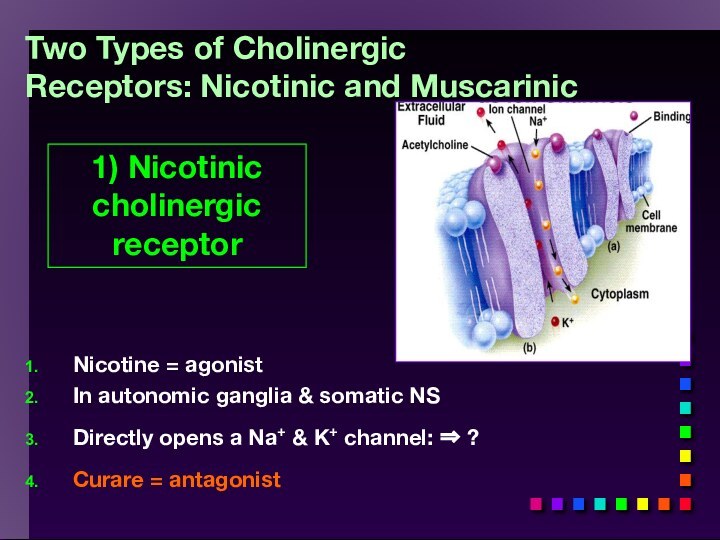






![Efferent peripheral NS: the autonomic votor divisions Sympathetic Receptorsα Receptors: NT is NE (most common) ⇒ Excitation [Ca2+] In↑](/img/tmb/15/1444032/6ffa2ada0000fe0a38ea9161cdf08730-720x.jpg)
![Efferent peripheral NS: the autonomic votor divisions β − Receptors Clinically more important β1 ⇒ Excitation heart ([E] =](/img/tmb/15/1444032/2655af7506e7e9e7b0ac8e94daf8f714-720x.jpg)



















Слайд 4
Autonomic Nervous System
Responsible for control of involuntary
or visceral bodily functions
cardiovascular cardiovascular
respiratory respiratory
digestive digestive
urinary urinary
reproductive functions
Key role in the bodies response to stress
Слайд 7
Autonomic Targets
Smooth Muscle
Cardiac Muscle
Exocrine Glands
Some Endocrine glands
Lymphoid Tissue
Adipose
Слайд 9
Sympathetic and parasympathetic divisions typically function in opposition
to each other. But this opposition is better termed
complementary in nature rather than antagonistic. For an analogy, one may think of the sympathetic division as the accelerator and the parasympathetic division as the brake.The sympathetic division typically functions in actions requiring quick responses.
The parasympathetic division functions with actions that do not require immediate reaction. Consider sympathetic as "fight or flight" and parasympathetic as "rest and digest".
Слайд 10
ANS
2 divisions:
Sympathetic
“Fight or flight”
“E” division
Exercise, excitement, emergency,
and embarrassment
Parasympathetic
“Rest and digest”
“D” division
Digestion, defecation, and diuresis
Слайд 11
1. The autonomic nervous system (ANS) is an
involuntary motor (efferent) system.
2. Autonomic nerves are typically composed
of a two-neuron chain. One neuron has its cell body in the central nervous system while the other is outside the CNS.
Слайд 12
Autonomic pathway: Two Efferent Neurons in Series
Preganglionic neuron
cell body in CNS
Synapse in autonomic ganglion outside CNS
(often divergence!) Postganglionic neurons
target cells
N1
N2
Слайд 14
3. Although “involuntary”, the autonomic nervous system is
regulated by higher centers. The best known of these
centers is the hypothalamus which has descending projections to cell bodies of the preganglionic neurons. Other areas of the central nervous system affect the activities of the hypothalamus.
Слайд 15
4. The autonomic nervous system consists of two
divisions:
a) the sympathetic (or thoracolumbar) division in which the
preganglionic cells are located in the thoracic and first two lumbar segments of the spinal cord.b) the parasympathetic (or craniosacral) division in which the preganglionic neurons are located in the brain stem and in sacral (S2 - S4) segments of the spinal cord.
Слайд 16 Sympathetic “Fight or flight” “E” division Exercise, excitement, emergency, and
embarrassment
Слайд 17
= Thoracolumbar
division (T1 to L2)
Preganglionic neurons (N1)from thoracolumbar region of spinal cord
Pre and paravertebral ganglia Long postganglionic neurins (N2) secrete NE onto adrenergic receptors
Слайд 18
Sympathetic (preganglionic ):
1. The cell bodies giving rise
to preganglionic neurons (N1) are located in the intermediolateral
column (lateral horn) of the gray matter in spinal cord segments T1 through L2.2. Preganglionic fibers leave the spinal cord with the ventral roots of spinal nerves arising from cord segments T1 - L2.
Слайд 19
Sympathetic (postganglionic ):
1. The cell bodies giving rise
to postganglionic neurons (N2) are located in the paravertebral
ganglia (sympathetic trunk (vertebral chain)).2. Prevertebral (collateral) ganglia: celiac, superior mesenteric, inferior mesenteric, aorticorenal and renal.
.
Слайд 20
Sympathetic ganglia
Sympathetic chain ganglia (paravertebral ganglia) –
preganglionic fibers of the sympathetic NS that carry motor
impulses to the body wall or thoracic cavity synapses in chain gangliaCollateral ganglia (prevertebral ganglia) – group of second order neurons that innervate organs in the abdominopelvic region
Слайд 21
Sympathetic Trunk Ganglia
Located on both sides of the
vertebral column
Linked by short nerves into sympathetic trunks
Joined to
ventral rami by white and gray rami communicantes Right and left sympathetic trunks extend from the base of the skull to the region of the coccyx; at their distal ends, the right and left trunks are fused.
Слайд 22
Prevertebral Ganglia
Unpaired, not segmentally arranged
Occur only in abdomen
and pelvis
Lie anterior to the vertebral column
Main ganglia
Celiac, superior
mesenteric, inferior mesenteric, inferior hypogastric gangliaСлайд 25 Rejoin spinal nerves and reach their destination by
way of the dorsal and ventral rami
Those targeting structures
in the thoracic cavity form sympathetic nervesGo directly to their destination
Postganglionic fibers
Слайд 27 Sympathetic innervation via preganglionic fibers that synapse within
collateral ganglia
Splanchic nerves – carry fibers that synapse in
collatheral gangliaAbdominopelvic viscera
Слайд 28
Celiac ganglion
Innervates stomach, liver, gall bladder, pancreas, spleen
Superior
mesenteric ganglion
Innervates small intestine and initial portion of large
intestineInferior mesenteric ganglion
Innervates kidney, urinary bladder, sex organs, and final portion of large intestine
Abdominopelvic viscera
Слайд 31
Other important considerations:
ganglion cells are usually located at
some distance from the effectors. Accordingly, postganglionic sympathetic fibers
are usually long fibers.Acetylcholine (Ach) - pre-ganglionic ganglionic Neurotransmitter
Norepinephrine (NE) - post-ganglionic ganglionic Neurotransmitter
Слайд 32
Sympathetic Division
A single sympathetic preganglionic fiber has many
axon collaterals and may synapse with 20 or more
postganglionic neurons.The postganglionic axons typically terminate in several visceral effectors and therefore the effects of sympathetic stimulation are more widespread than the effects of parasympathetic stimulation.
Слайд 34
Effects of Sympathetic Division
cardiac output increases
SA node: heart
rate (chronotropic) β1, : ↑cardiac muscle: contractility (inotropic) β1
↑conduction at AV node β1 : increasesvascular smooth muscle: α = contracts; β2 = relaxes
smooth muscles of bronchioles β2: relaxes;
pupil of eye α1: relaxes
ciliary muscle β2 : relaxes
smooth muscles of GI tractα, β2: relaxes
sphincters of GI tract α1: contracts
glands of GI tract inhibits
Слайд 35
THE STRESS REACTION
A stressful situation activates three major
communication systems in the brain that regulate bodily functions.
The first of these systems is the voluntary nervous system, which sends messages to muscles so that we may respond to sensory information.
The second communication system is the autonomic nervous system.
The brain’s third major communication process is the neuroendocrine system, which also maintains the body’s internal functioning.
Слайд 36
THE STRESS REACTION
When stress occurs, the sympathetic nervous
system is triggered. Norepinephrine is released by nerves; epinephrine
and norepinephrine is secreted by the adrenal glands. By activating receptors in blood vessels and other structures, these substances ready the heart and working muscles for action.Acetylcholine is released in the parasympathetic nervous system, producing calming effects. The digestive tract is stimulated to digest a meal, the heart rate slows, and the pupils of the eyes become smaller. The neuroendocrine system also maintains the body’s normal internal functioning.
Слайд 38
The two divisions of the autonomic
nervous system are not infrequently said to be antagonists
in the sense of their having opposite effects
Слайд 39
Homeostasis and the Autonomic Division
BP, HR, Resp., H2O
balance, Temp. . .
Mostly dual reciprocal innervation
i.e., agonist/antagonist
or excitatory/inhibitorySympathetic:
AKA Thoracolumbar
flight-or-fight
Parasympathetic:
AKA Craniosacral
rest and digest
Слайд 40
Other important considerations:
ganglion cells are usually located
at some distance from the effectors. Accordingly, postganglionic sympathetic
fibers are usually long fibers.
Слайд 41
The terminations of most, but not all, sympathetic
postganglionic fibers release a substance (norepinephrine). Such postganglionic fibers
are commonly called adrenergic fibers.
Слайд 43
The effects elicited by the action of the
sympathetic division of the ANS are typically effects useful
in “fight or flight”. These include dilation of the pupil, increase in heart rate, elevation of blood pressure, diversion of blood from the alimentary tract to skeletal muscles, etc.Слайд 45 Parasympathetic: Craniosacral or rest and digest Center of parasympathetic
division the ANS
Has preganglionic cell bodies (N2) in
the midbrain and brainstem and in sacral segments 2, 3 and 4 of the spinal cord.The fibers of cells in the midbrain and brainstem are in the oculomotor (III), facial (VII), glossopharyngeal (IX), and vagus (X) nerves. They innervate smooth muscles of the eye (III), lacrimal and salivary glands (VII and IX), and smooth muscles of the thoracic and abdominal viscera (X).
Слайд 49
= Craniosacral Division
Long preganglionic axons from brain
& S2- S4
Intramural ganglia
Postganglionic (nonmyelinated) neurons
secrete ACh onto cholinergic muscarinic receptorsСлайд 50 Parasympathetic: Craniosacral or rest and digest Center of parasympathetic
division the ANS
The cell bodies giving rise to
postganglionic neurons (N2) are located in the Intramural ganglia.
Слайд 51
The ganglion cells of the parasympathetic system are
located in or on the wall of the organs
supplied or in specific ganglia located near the organs supplied. Hence the postganglionic fibers are short.Except for the vagus nerves, the area of distribution of parasympathetic nerves is somewhat limited. The number of synaptic connections is smaller than in the sympathetic division. Accordingly, the effects of the parasympathetic division tend to be local rather than widespread.
Слайд 53
Most postganglionic parasympathetic fibers release acetylcholine at their
terminations. These fibers are, hence, often called cholinergic fibers.
They may also release a variety of peptides that influence smooth muscle activity.
Слайд 54
Summary: Pre- & Postganglionic Parasympathetic Neurons Release ACh
muscarinic
nicotinic
Receptors
N1
N2
Слайд 55
All parasympathetic fibers release ACh
Short-lived response as ACH
is broken down by AChE and tissue cholinesterase
Neurotransmitters and
parasympathetic functions
Слайд 56
Parasympathetic (muscarinic)
cardiac output M2: decreases
SA nodeSA node:
heart rate (chronotropic) M2: decreases
cardiac musclecardiac muscle: contractility
(inotropiccardiac muscle: contractility (inotropic) M2: decreases (atria only) conduction at AV node M2: decreases
smooth musclessmooth muscles of bronchioles M3: contracts
pupilpupil of eye M3: contracts
ciliary muscle M3: contracts
salivary glands: secretions stimulates watery secretions
GI tract motility M1, M3: increases
smooth musclessmooth muscles of GI tract M3: contracts
sphincterssphincters of GI tract M3: relaxes
glandsglands of GI tract M3: secretes
Слайд 57
Effects produced by the parasympathetic division
relaxation
food processing
energy
absorption
Parasympathetic activation
Слайд 58
The parasympathetic division controls body process during ordinary
situations. Generally, it conserves and restores. It slows the
heart rate and decreases blood pressure. It stimulates the digestive tract to process food and eliminate wastes. Energy from the processed food is used to restore and build tissues.
Слайд 59
Most Common Autonomic NTs:
Acetylcholine (ACh)
ACh neurons & ACh
receptors are called cholinergic (nicotinic or muscarinic). Located at
autonomic preganglionic & para-sympathetic postganglionic synapsesNorepinephrine (NE)
NE neurons & receptors are called (nor) adrenergic (α and β). Located at sympathetic postganglionic synapses
Fig 11-7
Слайд 61
Neuroeffector Junction
= Synapse between postganglionic cell and target
Most
are different from model synapse (compare to Fig 8-20,
p. 270)ANS synapse: axon has varicosities containing neurotransmitter
May supply many cells, resulting in less specific communication
Synthesis of NT is in the varicosity
Fig 11-8
Слайд 62
Summary: Pre- & Postganglionic Parasympathetic Neurons Release ACh
muscarinic
nicotinic
Receptors
N1
N2
Слайд 63
Two Types of Cholinergic Receptors: Nicotinic and Muscarinic
Nicotine
= agonist
In autonomic ganglia & somatic NS
Directly opens a
Na+ & K+ channel: ⇒ ?Curare = antagonist
1) Nicotinic cholinergic receptor
Слайд 64
When the neurotransmitter, acetylcholine, attaches to the portion
of the nicotinic receptor outside of the cell wall,
it induces a conformational change that selectively opens up the channel to sodium ions. The resulting influx of positively charged sodium then triggers membrane depolarization.Слайд 65 2) Muscarinic
cholinergic receptor
Muscarine
= agonistFound in neuro-effector junctions of parasympathetic branch
G-protein coupled mechanisms
Atropine = antagonist
Amanita muscarina
N1
N2
Слайд 66 Muscarinic ACh are G-protein Mediated Receptor Mechanism of
Sweat Glands:
Also some 2nd messenger mechanisms
Слайд 67
Note on G-Proteins:
Many functions of the nervous
system (e.g., memory) require prolonged changes in neurons after
the initial neurotransmitter is gone. Ligand-gated channels (such as those found in nicotinic receptors) are not suitable for this because the channels close in milliseconds. Prolonged changes can be achieved, however by activating G-proteins inside the post-synaptic neuron. It is then the G-proteins that trigger the prolonged effects.
Слайд 68
Adrenergic
Receptors
Found in neuroeffector junctions of sympathetic branch
G
protein linked, with various 2nd mess. Mech
NT is NE
α-
and β- Receptors
Слайд 70
Sympathetic Receptors
α Receptors:
NT is NE
(most common)
⇒ Excitation [Ca2+] In↑ ⇒ muscle contraction or secretion
by exocytosis.⇒ Inhibition of GI tract and pancreas
Слайд 71
β − Receptors Clinically more important
β1 ⇒
Excitation heart ([E] = [NE])
“β - blockers” = Antagonists
(e.g.: Propranolol)β2 usually inhibitory: smooth muscle relaxation of some blood vessels and bronchioles ([E] > [NE])
β3 Adipose; [NE]>[E]
“β -blockers” = Antagonists (e.g.: Propranolol)
Слайд 72
Termination of NT Activity
ACh:
ACh esterase
Catecholamine reuptake
repackaging
degradation (MAO)
Blocked by
cocaine
Fig 11-9
Fig 8-22
Слайд 73
Somatic Motor Division
Pathway consists of single neuron from
CNS to target
Neuromuscular junction: nicotinic cholinergic receptors
Similar to
synapse; post – synaptic membrant called Motor End PlateRecall Motor Unit
Always excitatory ⇒ muscle contracts
All Ach mediated
Degraded by Ach esterase
Fig 11-13








